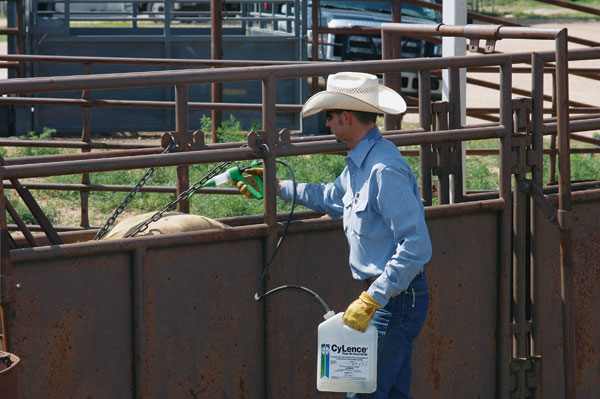A recent survey suggested that too many producers thought animal health was a number one concern. Here's what you can do to change that.
March 30, 2018

In my January column, I explored several critical herd health issues. This is Part 2, and we’ll examine pinkeye and parasites.
Pinkeye
Most diseases are multifactorial, and this one is no exception.
Fly control: The use of insect growth regulators (IGR) or larvicides in the mineral starting one month prior to fly exposure is a well-proven management practice to reduce fly pressure. Use a product labeled for controlling face flies (all control horn flies), as they can spread the pinkeye-causing bacteria from animal to animal.
Use fly tags in cows and calves. While putting tags in both is ideal, using in cows is the key. Also, don’t forget the bulls! They need fly control, too. Rotate among pyrethroid, organophosphate and avermectin tags. Pouring the cattle with a fly-control product the same day you fly-tag is an excellent way to get a quick kill on the flies.
Many of the free-choice mineral feeders come with an option that applies insecticide to the face of the cow as she consumes the mineral. These can be quite effective if they are kept recharged with insecticide.
If cows have to walk through a narrow opening, using an insecticide-soaked “fly wipe” can be helpful. There are also noninsecticide options where cattle walk through a “fly trap,” where flies are mechanically “wiped” from the animal and then fall into a trap.
Spraying cows during the summer can be another effective way to reduce the fly pressure.
Pasture management: Ranches that practice management-intensive grazing (MiG) and don’t allow grass to mature have fewer pinkeye issues than ranches that allow grass to grow tall and form a seed head. The grass can irritate the eyes, and the seeds can lodge in the conjunctiva and scratch the cornea. Keep grass under 10 inches by grazing or clipping to decrease the chance of irritation.
Immunity: There are a number of vaccines for pinkeye, and they contain various strains of bacteria. Select a product with advice from your herd health veterinarian, as he or she is the best source of information for the ideal vaccine for your area. If you are still getting cases after performing all of the above, ask your herd health veterinarian about culturing the eyes to see what organisms are responsible.
Internal parasite control
There is widespread confusion on the ideal deworming protocol for beef cow-calf herds. Include me in the “confused” majority. I think we as veterinarians have had about five different protocols proposed to us by those studying this specialty in the past 30 years. “Deworm cows in the fall, no, in the spring. Deworm calves at grass turnout; no, maybe not. Treat the young cows, not the old ones” ... See why we are confused?
On most well-managed beef herds, the cows should only need to be dewormed one, or at most, two, times per year. The current recommendation is to deworm the cows at, or a few weeks after, pasture turnout. The pasture is the main source of parasite larvae, so deworming around this time allows the cow to act as a “vacuum cleaner” and ingest the parasites on the pasture. The parasites then die due to exposure to the dewormer.
There is less controversy on the calf side, and nearly everyone agrees that calves should be dewormed as they are moved off pasture. They have been exposed to parasites throughout the grazing season, and their immune systems are mostly naïve to these parasites.
Have a discussion with your herd health veterinarian on a deworming strategy, as there are many questions to be answered before you select a protocol.
Hilton, DVM, PAS, DABVP (beef cattle practice), is a clinical professor emeritus of Purdue University College of Veterinary Medicine; and senior technical veterinary consultant for Elanco Animal Health.
About the Author(s)
You May Also Like



.png?width=300&auto=webp&quality=80&disable=upscale)
.png?width=300&auto=webp&quality=80&disable=upscale)
